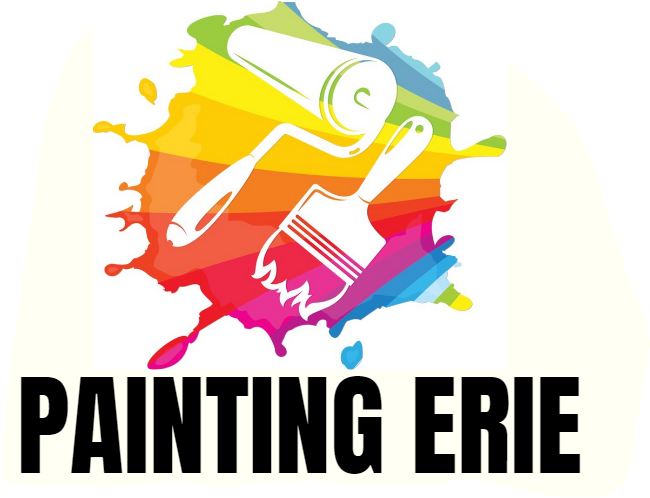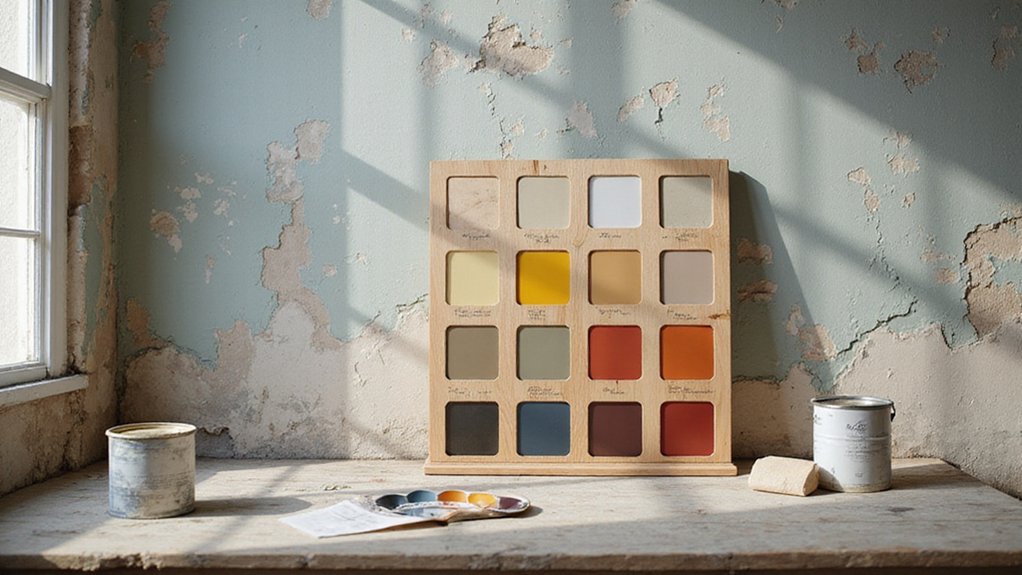When it comes to matching new paint to existing colors in your home, precision is key. You’ll need to dig deeper than just eyeballing the color to get it right. Start by gathering the essential tools and materials you’ll need to get started. With the right equipment and a keen eye for detail, you’ll be able to break down the original paint color into its component parts, from sheen level to undertones. But that’s just the beginning – can you accurately capture the color’s subtle shifts in different lighting conditions?
Gather Essential Tools and Materials
As you set out on the process of matching paint colors, gathering essential tools and materials is a pivotal first step. You’ll need a variety of paint brushes in different sizes to accurately test colors on your wall. Invest in high-quality brushes that will provide smooth, even coverage.
Next, collect color swatches from paint stores or online retailers. These swatches will serve as a reference point for comparing colors. Additionally, have a paint fan deck or color wheel on hand to help you identify undertones and shades in the color. A small notebook and pen will also come in handy for recording observations and notes about each color.
With these tools and materials at your disposal, you’ll be well-equipped to commence the color-matching process. Consulting with color experts can further enhance your selection by providing professional advice on achieving the perfect match.
Examine the Original Paint Color
You’ve set the stage with your tools and materials; now, turn your attention to the original paint color. Take a closer look at the walls, inspecting the paint sheen levels. Are they flat, eggshell, or semi-gloss? Note the subtle differences, as these will affect the final match.
Next, compare existing color chips from the original paint can or swatches to the painted surface. Hold them up at various angles, observing how the color shifts in different lighting conditions. This will help you identify the undertones, whether they’re warm, cool, or neutral. Be painstaking, as even slight variations can impact the final result. Remember that a well-matched exterior paint can also enhance curb appeal and make a lasting impression on visitors or potential buyers.
Create a Color Profile
Three key elements comprise an extensive color profile: colorimetric data, visual assessments, and material considerations.
To create an all-encompassing profile, you’ll need to gather information on the color’s physical properties, how it appears in different lighting conditions, and how it interacts with surrounding materials. Consider color undertones, as they can profoundly impact the overall appearance of the paint. For instance, a blue undertone can make a neutral color appear cooler, while a yellow undertone can make it appear warmer.
Assess color saturation by evaluating the color’s brightness and intensity. Is the color lively and bold, or muted and subtle? By considering these factors, you’ll be able to create a detailed color profile that will help you find the perfect match for your existing paint color.
Test Paint Samples
After gathering extensive data for your color profile, it’s essential to validate your findings by testing paint samples. This step helps you make certain the selected colors will look great in your home.
Apply test patches of 2-3 paint samples on the walls, ceilings, or trim, depending on where you plan to use the new paint.
- Observe how the paint samples interact with different lighting conditions, such as natural light, artificial light, and shadows.
- Document sample results by taking notes and photographs of each test patch at various times of the day.
- Compare the test patches to your original color profile to confirm they match your desired color.
Compare Color Options
With your test patches in place, it’s time to evaluate and compare the color options. Analyze the undertone variations between each sample, paying attention to whether they lean warm, cool, or neutral. This will help you identify the most compatible shade.
Next, investigate complementary hues that will augment the overall aesthetic of your space. Consider how each color will interact with the surrounding decor, furnishings, and natural light. You may be surprised at how a particular shade can either clash or harmonize with these elements.
Take note of which samples appear most cohesive and appealing. By carefully comparing your options, you’ll narrow down the selection and make an informed decision about the perfect paint color for your home.
Consider the Lighting Factor
As you evaluate the color options, remember that lighting plays a crucial role in how the paint color will eventually appear on your walls. Natural lighting, in particular, can dramatically impact the color’s appearance. To guarantee an accurate match, evaluate natural lighting effects by observing how the color looks at different times of day.
Monitor color variations in the morning, afternoon, and evening to see how the lighting affects the color.
Consider the direction your windows face and how this impacts the color’s appearance.
Take note of any artificial lighting sources, such as lamps or overhead lights, and how they affect the color.
Get a Professional Opinion
Most homeowners can benefit from a second opinion, especially when it comes to selecting a paint color that will look great in their unique space. If you’re still unsure about the perfect shade, consider hiring a color consultant who can provide customized guidance. These professionals have the know-how to analyze your home’s lighting, structure, and furnishings to recommend the most suitable colors.
Alternatively, you can use a paint matching service, which uses advanced technology to identify the exact color you’re looking for. They’ll provide you with a precise color match, ensuring a seamless blend with your existing colors. By seeking a professional opinion, you’ll save time and avoid costly mistakes. With their expert advice, you’ll feel confident in your color choice and enjoy a beautiful, harmonious space that reflects your personal style.
Frequently Asked Questions
Can I Use a Smartphone App to Scan Paint Colors?
You can use smartphone apps that employ advanced color matching technologies to scan paint colors, but for precise results, consider ordering paint sample services, which provide physical swatches for a more accurate color match.
How Long Does It Take to Match a Paint Color?
You’ll typically spend 15-30 minutes at a paint store, where experts will guide you through the paint color mixing process, utilizing advanced paint color matching techniques to guarantee an exact shade that suits your unique needs.
Can I Mix Old and New Paint for a Perfect Match?
You can attempt to mix old and new paint, but it’s often unreliable; instead, try making paint tint adjustments or create a paint sample mixing chart to guarantee an accurate, perfect match.
Do I Need to Match the Exact Brand of Original Paint?
You don’t necessarily need to match the precise brand, but it’s vital to guarantee paint type compatibility; seek paint store assistance to assure a perfect match, as they can guide you through the process with proficiency.
Can I Use a Paint Color From a Different Room as a Reference?
You can use a paint color from a different room as a reference, but consider the existing wall texture and room lighting conditions, as they may affect the color’s appearance, ensuring an accurate match.

